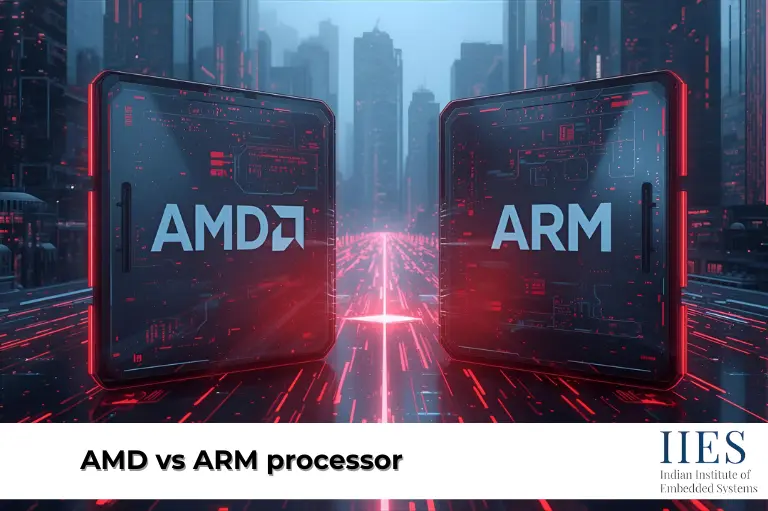
AMD vs ARM processor is a common comparison in the tech world.AMD and ARM are two well-known names in the processor world. Both power different kinds of devices, from gaming PCs and laptops to smartphones and IoT systems. But are AMD processors the same as ARM processors? Let’s break it down in simple words and clear up the confusion.
AMD processors are not ARM processors. AMD uses x86 (CISC) architecture, while ARM is based on RISC architecture. Both serve different purposes in computing.
Before comparing AMD and ARM, it’s important to understand what processor architecture means. Architecture defines how a processor is designed, how it handles instructions, and how it communicates with hardware and software.
Both companies design processors, but their approaches and use cases are different.
AMD is one of the main companies producing x86 processors, a standard originally created by Intel in the late 1970s. AMD’s processors are commonly found in laptops, desktops, gaming systems, and data centers.
CISC processors can execute complex instructions in fewer lines of code. This helps in tasks like:
The trade-off? They generally use more power and energy compared to ARM processors. This is why many discussions highlight arm vs x86 in terms of design and efficiency. Some also debate arm architecture vs x86 when comparing performance across desktops and mobile devices.
Others even explore 64 bit arm vs x86 to understand compatibility and performance in modern systems.
ARM processors are very different from AMD. ARM does not usually make chips itself; instead, it licenses its designs to companies like Apple, Qualcomm, and Samsung.
Each instruction in a RISC processor is simple and lightweight. This makes ARM processors:
This is one of the main difference between arm and x86, especially when comparing desktops and mobile environments.
This efficiency is why ARM dominates in:
Many beginners think AMD and ARM are related because both make processors. In reality, they are based on completely different architectures and serve different needs.
Some comparisons like arm cpu vs x86 highlight raw performance differences. Others explore arm processor vs intel vs amd to see how all three brands compete in consumer and enterprise markets.
Both were designed with different goals in mind:
When we compare AMD and ARM, the main differences come from their architecture, performance, and use cases. These differences explain why each is strong in its own domain.
Even though AMD and ARM were built with different goals, modern computing has created some areas where their paths cross. Let’s look at where these overlaps happen.
In such contexts, comparisons like arm vs x64 performance and x86 vs x64 vs arm often arise among professionals.
Understanding real-world use cases makes the AMD vs ARM comparison easier. Both are widely used but in very different types of devices and industries.
Technology is changing fast. ARM is moving into areas like laptops and servers, once dominated by AMD and Intel. At the same time, AMD is working on making its processors more energy-efficient.
The future may see both architectures co-existing:
| Feature | AMD Processors (x86 / CISC) | ARM Processors (RISC) |
|---|---|---|
| Architecture | x86 (CISC – Complex Instruction Set Computing) | RISC (Reduced Instruction Set Computing) |
| Design Goal | High performance for complex tasks | Efficiency and low power usage |
| Instruction Set | Complex instructions, multiple operations at once | Simple instructions, executed quickly |
| Power Consumption | Higher, needs more energy | Very low, optimized for battery devices |
| Performance | Excellent for gaming, rendering, and servers | Balanced performance with high efficiency |
| Best Use Cases | PCs, gaming laptops, enterprise servers, cloud | Smartphones, tablets, IoT, embedded systems |
| Examples | Ryzen, EPYC, Threadripper | Apple M1/M2, Snapdragon, Raspberry Pi chips |
| Strengths | Raw computing power, multitasking, heavy workloads | Portability, battery life, scalability |

AMD and ARM are not the same. AMD processors use x86 architecture and focus on high performance for gaming, content creation, and enterprise workloads. ARM processors, on the other hand, use RISC architecture and focus on efficiency, portability, and scalability for mobile and IoT. Both are strong in their own areas, and the choice depends on what matters more to you.
No, AMD uses x86 architecture, not ARM.
AMD is built on CISC (x86) for performance, while ARM is built on RISC for efficiency.
ARM processors use simpler instructions and RISC design, making them highly power-efficient.
They serve different use cases, but some overlap exists in servers and cloud computing.
Currently, AMD sticks with x86, but industry trends may push ARM collaborations.
ARM is better for mobile devices due to low power consumption and efficiency.
Indian Institute of Embedded Systems – IIES